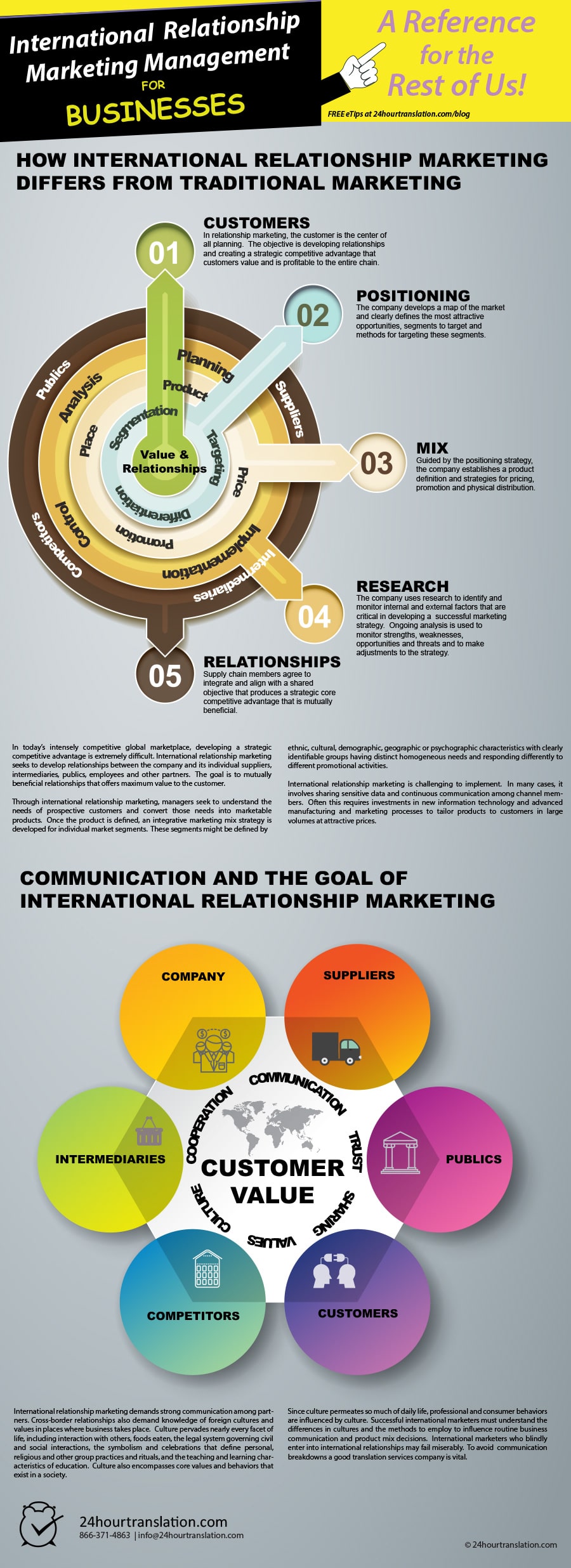Today’s world of global business demands new levels of openness, cooperation and teamwork if the objective of long-term trust, problem resolution, continuous improvement and mutual win-win bonds are to be established and strengthened.
What is International Relationship Marketing?
First introduced more than 20 years ago, International Relationship Marketing, in theory, consists of two components, a relational component and an economic component. In traditional marketing transactions, the emphasis resides somewhere between these two dimensions. However, in International Relationship Marketing greater emphasis is placed on the relationship aspect and, therefore, requires disrupting the customer’s, the intermediary’s and the supplier’s thinking and assumptions about business. Instead of thinking what is good for the individual or company, the emphasis is on how to benefit all members of the relationship. Under the International Relationship Management strategy, all stakeholders in the supply chain must be integrated and aligned to the overall objective: development of a relationship among all constituents that produces a strategic core competitive advantage that is mutually beneficial.
Stakeholders may include and are not limited to suppliers, regulators, government, competitors, employees, designers, developers, manufacturers, sales representatives and others who impact performance and marketplace positioning. The main focus, however, is generally the business and its nearest stakeholders, usually the customers.
Relationship Marketing exists domestically, but companies today also confront aggressive competition on a international level. Consequently, buyer-seller relationships must exist domestically and internationally. For International Relationship Marketing to work, managers must understand international diversity and recognize cross-cultural differences.
What is the Benefit of International Relationship Marketing?
On average, research suggests that gaining a customer costs ten times more than retaining a customer. In Business-to-Business marketing, once a company gains a new customer, bringing that new customer up to the same level of profitability usually adds more costs. Some costs include training, promotional literature, signage, inventory control setup and more. Finally, increasing customer retention by a few percentage points can greatly improve profitability.
The Future of Marketing
The challenges of today’s international business world forces companies away from traditional marketing practices and toward relationship marketing. In relationship marketing, value is created through the interactions between the supplier or service provider and the customer, requiring strong communication skills. In international markets, professional translators are a necessity, increasingly becomes more pronounced as conflict occurs naturally when building mutually beneficial relationships.
In international markets, miscommunication from translation error can be a source of conflict. Therefore, cooperating in foreign markets requires strong translation services. Without strong translation, the type of cooperation needed among intermediaries to create the value that the customer is looking for would be impossible achieve.

